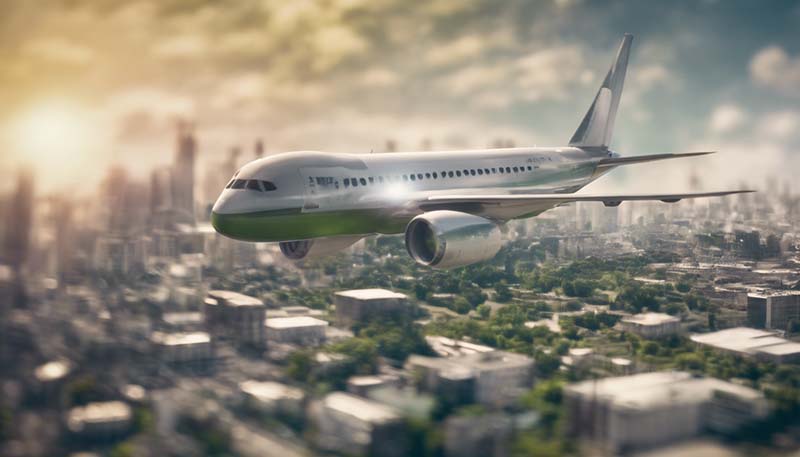The aviation industry has experienced rapid growth over the past few decades, with air travel becoming more accessible and affordable for a growing number of people. However, this growth has come at a significant cost to the environment. The environmental impact of aviation is a pressing issue that requires urgent attention and innovative solutions. This article will explore the environmental challenges posed by the aviation industry and discuss the potential of new technologies to pave the way for a greener sky.
Environmental Challenges in Aviation
Greenhouse Gas Emissions
One of the most significant environmental concerns associated with aviation is the emission of greenhouse gases (GHGs), primarily carbon dioxide (CO2). Aircraft engines release CO2 during the combustion of aviation fuel, which contributes to global warming and climate change. According to the International Council on Clean Transportation (ICCT), aviation is responsible for about 2.4% of global CO2 emissions. This figure is expected to rise as air travel continues to grow, making it essential to find ways to reduce the industry's carbon footprint.
Advertisement
Air Pollution
Apart from CO2, aircraft engines also emit other harmful pollutants, such as nitrogen oxides (NOx), sulfur oxides (SOx), and particulate matter (PM). These pollutants can have detrimental effects on human health and the environment. NOx and SOx emissions contribute to the formation of ground-level ozone and acid rain, respectively, while PM can penetrate deep into the lungs and cause respiratory issues.
Noise Pollution
Noise pollution is another significant environmental challenge associated with aviation. Aircraft noise can disrupt the lives of people living near airports, affecting their sleep, learning, and overall well-being. Moreover, noise pollution can have negative impacts on wildlife, causing stress and altering animal behavior.
Technological Innovations for a Greener Sky
Efficient Aircraft Design
One way to reduce the environmental impact of aviation is by designing more fuel-efficient aircraft. Engineers and manufacturers are constantly working on innovative designs that can improve aerodynamics, reduce drag, and optimize engine performance. For example, the use of lightweight materials such as carbon-fiber composites can significantly reduce the weight of an aircraft, leading to lower fuel consumption and reduced emissions.
Alternative Fuels
Another promising solution to mitigate the environmental impact of aviation is the use of alternative fuels. Sustainable aviation fuels (SAFs) are made from renewable resources, such as waste oils, agricultural residues, and algae. These fuels have the potential to reduce GHG emissions by up to 80% compared to conventional jet fuel. The challenge lies in scaling up the production and distribution of SAFs to meet the growing demand for air travel.
Electric and Hybrid Aircraft
The development of electric and hybrid aircraft is another exciting technological innovation that could revolutionize the aviation industry. These aircraft use electric motors or a combination of electric motors and conventional engines to reduce fuel consumption and emissions. While electric and hybrid aircraft are still in the early stages of development, they have the potential to significantly reduce the environmental impact of air travel in the future.

Air Traffic Management
Improved air traffic management can also contribute to a greener sky. By optimizing flight routes and reducing unnecessary flight time, fuel consumption and emissions can be minimized. Advanced air traffic management systems can help reduce delays, manage airspace more efficiently, and minimize the environmental impact of air travel.
Conclusion
The environmental impact of aviation is a complex issue that requires a multifaceted approach. By embracing new technologies and innovative solutions, the aviation industry can work towards a greener sky and a more sustainable future. Efficient aircraft design, alternative fuels, electric and hybrid aircraft, and improved air traffic management are just a few of the many ways in which we can reduce the environmental footprint of air travel and protect our planet for future generations.